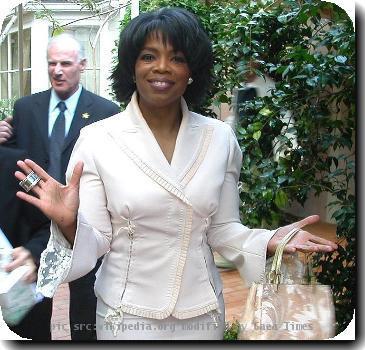‘Idol’ creator debuts new Web series, aiming to bring TV magic to the Internet
By Jake Coyle, APMonday, March 1, 2010
‘Idol’ creator debuts new Web series,
NEW YORK — Reality television, dominant on the tube, is making its most dramatic foray onto the Web.
On Tuesday, Simon Fuller, the creator of a little show called “American Idol,” will debut “If I Can Dream” on Hulu.com. The magnitude of the event — a TV icon leaping to the Internet — is a little like when Oprah Winfrey got a Twitter account.
The show follows five young people — three actors, a musician and a model — hoping to succeed in Hollywood. The show debuts as they move into a Hollywood Hills house. Their lives will be followed not just by the weekly program, but by a live stream on ificandream.com.
The hype has been “Idol”-sized. The show promises “24/7 real-time interactive access.” Fans can connect to the contestants on Twitter, Facebook and MySpace, too. The cast recently toured the country and on Monday, media were even invited for a “sneak preview” of the house.
Such fanfare for a Web series launch is unusual if not simply unheard of. It’s all to suggest that this is a Big Deal, because Web series have generally struggled for attention.
“There was this conventional wisdom that said, ‘Well, the economics aren’t there to do high-quality TV on the Web,’” said Andy Forsell, senior vice president of content and distribution at Hulu. “That may have been true a couple years ago, but we don’t think it’s true today.
“The missing link for us has not been strong enough monetization. The missing link has been someone like Simon that says, ‘We’re going to do this.’”
Reality TV, though, is a specific genre. The brand practiced by Fuller’s “Idol” and shows such as “So You Think You Can Dance?” (which he co-created) is a particular kind of talent contest, expertly engineered to work on television.
It stands to reason that that model might not transfer seamlessly to another medium. Fuller’s stated goal for “If I Can Dream,” after all, is to have it ascend to TV after its initial run as a Web series.
“Maybe this will be a tipping point,” said Marc Hustvedt, the editor-in-chief of TubeFilter News, which reports on Web television. “Maybe as brands realize they can reach audiences online, they will be more comfortable backing reality projects.”
To a certain degree, the Web itself is reality TV. Facebook pages, YouTube videos and blogs are teaming with people aspiring for fame, looking for an audience by cutting out traditional middle men.
It would be unwise to bet against Fuller succeeding, given his track record, but the history of reality Web series is a checkered one.
Some of the most interesting Web series have blurred the lines between fiction and reality. One of the first Web series hits, “Lonelygirl15,” at first fooled many who thought her Webcam confessionals were realistic. Craig Brewer’s “$5 cover” for MTV.com similarly used the form for realism, with Memphis musicians playing themselves and improvising dialogue.
The Streamy Awards, which are produced by TubeFilter Inc., honor the category of “best reality or documentary Web series.”
This year’s nominees, announced Monday, include the Sony-produced series that followed an adult film star raising two teenagers (”Mommy XXX”), David Lynch’s “Interview Project,” PBS.org’s “The Secret Life of Scientists,” the college streaking series “Streak to Win” and Babelgum’s “RADAR.”
“The Web allows for these different kind of experimental pieces,” says Hustvedt. “They don’t have to fit into the traditionally HBO documentary or something more rigid like network reality shows.”
Reality shows have thrived on TV in part because they’re cheap to produce compared to original dramas and sitcoms. For the Web, however, they’re on the expensive side. They demand a lot of filming and lot of editing.
The hopeful star format of “If I Can Dream” has been tried before.
In 2008, “Model.Live” was created by Babo and Vogue.TV in the style of “America’s Next Top Model.” Featuring three models trying to make it in the fashion industry, it lasted one season. CBS.com tried it with “InTurn,” which ran for three seasons. On that show, aspiring actors competed for a role on the soap opera “As the World Turns.”
TheWB.com, the defunct broadcast network reborn as a Web destination, attempted an MTV-style reality show called “Rich Girl Poor Girl,” about California teenagers switching homes, from posh Pacific Palisades to East L.A.
Some of the more curious reality Web series are less predicated on familiar TV formats.
William Shatner’s “The Shatner Project,” produced by his daughter Lisabeth Shatner, showed the actor behind-the-scenes: chatting in his “Boston Legal” dressing room; singing to whales on vacation in Hawaii.
Penn Jillette, the comedian and magician, has done “Penn Says” for Sony’s Crackle.com. True to its title, the show consists of Jillette simply talking into the camera.
A more unusual perspective on “reality” is something like “The Mortified Shoebox Show,” a series that collects videos of people sharing the journals, letters, poems, lyrics and home movies that they created as children. Or on Amtrekker.com, Brett Rounsaville traveled the country with a to-do list 50 items long, chronicling the trip with videos, podcasts and blog entries. “In Their Boots” documents the experience of U.S. soldiers coming home from war.
But Fuller is clearly aiming higher than these quirky shows and their niche audiences. “If I Can Dream” is shooting for populism in a medium that has largely been defined by fractured audiences.
“We want to see people getting passionate about this,” said Forsell. “If that passion is there, then that shows that it can spread and that lots of people could love the show and it’s just a matter of time.
“That’s another of the benefits of the Web: You can take time to build an audience.”
Hulu is co-owned by NBC Universal, News Corp.’s Fox Entertainment and Disney’s ABC Inc.; MTV is a unit of Viacom Inc.
Tags: Arts And Entertainment, Hulu, New York, North America, Oprah winfrey, Television Programs, United States

